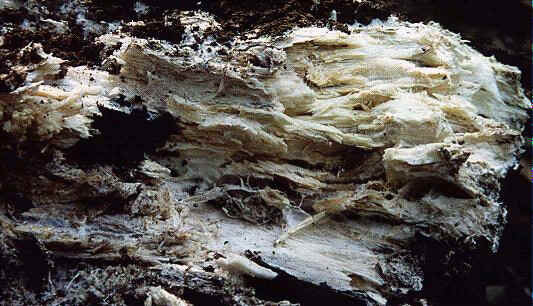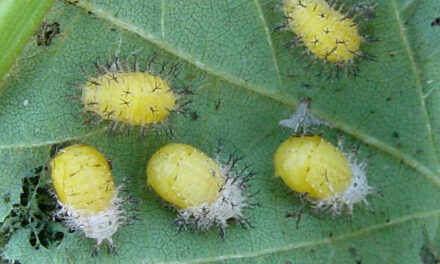White rot is a natural phenomenon that plays an essential role in breaking down and recycling dead wood in forest ecosystems. By decomposing lignin and cellulose, fungi responsible for white rot return vital nutrients to the soil, supporting the growth of new plant life. However, this natural process can also have negative impacts, particularly on the timber industry and wooden structures. In this blog post, we'll delve into the fascinating world of white rot, exploring its causes, effects, and ways to prevent and control it.

What is White Rot?
White rot is a type of wood decay caused by various species of fungi. These organisms secrete enzymes that break down the lignin and cellulose found in wood, leaving behind a white or bleached appearance. The decomposition process can cause structural damage to both living trees and wooden objects, such as furniture, buildings, and other structures.
The Biology of White Rot Fungi
White rot fungi are diverse, with over 1700 species known to cause this type of decay. These fungi have developed a unique ability to degrade lignin, the complex organic polymer that provides rigidity and strength to wood. Through the secretion of enzymes such as lignin peroxidase, manganese peroxidase, and laccase, white rot fungi are able to break down lignin into simpler compounds, which are then absorbed as nutrients.
The Role of White Rot in Ecosystems
- Nutrient Cycling
White rot plays a crucial role in nutrient cycling within forest ecosystems. As dead trees and woody debris are broken down by fungi, essential nutrients such as nitrogen, phosphorus, and potassium are released back into the soil. These nutrients are then available for uptake by other plants, promoting new growth and maintaining overall ecosystem health.
- Habitat Creation
Decomposing wood also provides an ideal habitat for various organisms, such as insects, birds, and small mammals. The complex structure of rotting wood offers shelter and food resources, supporting biodiversity within the ecosystem.
Negative Impacts of White Rot
- Timber Industry
White rot is a significant concern for the timber industry, as it can weaken wood and reduce its commercial value. Affected wood is often considered unsuitable for construction, furniture making, and other applications where strength and durability are required. This results in significant economic losses for the industry.
- Structural Damage
White rot can also cause structural damage to wooden buildings and infrastructure, such as bridges and utility poles. Over time, the degradation of wood can lead to structural instability, posing safety risks and necessitating costly repairs or replacements.
Preventing and Controlling White Rot
- Proper Wood Treatment and Storage
Preventing white rot starts with proper treatment and storage of wood. Applying fungicides, sealants, or other protective coatings can help to inhibit fungal growth. Storing wood in dry, well-ventilated areas can also reduce the likelihood of white rot development.
- Monitoring and Early Detection
Regular inspection of wooden structures is essential for early detection of white rot. Identifying and addressing decay early can help to minimize damage and reduce the need for expensive repairs or replacements.
- Biological Control
Research into biological control methods is ongoing, with some promising results. Certain species of bacteria and other fungi have shown potential as natural antagonists to white rot fungi, inhibiting their growth and reducing wood decay.
- Genetic Engineering
Advances in genetic engineering may provide another avenue for controlling white rot. Scientists are working on developing genetically modified trees that produce compounds toxic to white rot fungi, effectively protecting the wood from decay.
White Rot in Art and Culture
Interestingly, white rot has also found its way into art and culture. Some artists have embraced the unique patterns and textures created
by white rot decay as a source of inspiration for their work. These artists incorporate the natural beauty of decomposing wood into sculptures, paintings, and installations, celebrating the transformative power of fungi and the cycle of life and death within nature.
The Value of Research and Education
Understanding the complex biology and ecology of white rot is crucial for developing effective strategies to prevent and control its negative impacts. Ongoing research in the fields of mycology, forestry, and biotechnology is essential to expand our knowledge of these fungi and their interactions with other organisms and the environment.
Educational efforts aimed at raising awareness about white rot and its effects on ecosystems and human infrastructure are also vital. By educating the public and industry professionals, we can promote responsible forestry practices, proper wood treatment and storage, and early detection and intervention, ultimately reducing the adverse effects of white rot.
The Future of White Rot Management
As our understanding of white rot and its related fungi continues to grow, so too will our ability to manage and control its impacts. Innovations in biotechnology, genetic engineering, and natural biological control methods offer promising solutions for reducing the damage caused by these fungi. By integrating these approaches with traditional prevention and management strategies, we can work towards a more sustainable future where the benefits of white rot are maximized, and its negative consequences are minimized.
White rot is a fascinating and complex natural process that plays a crucial role in forest ecosystems. While it contributes significantly to nutrient cycling and habitat creation, it can also have negative impacts on the timber industry and wooden structures. Understanding the biology of white rot fungi and their ecological roles is essential for developing effective prevention and control strategies. Through ongoing research, education, and the adoption of innovative management practices, we can balance the benefits and drawbacks of white rot, promoting healthy ecosystems and a sustainable future.



















